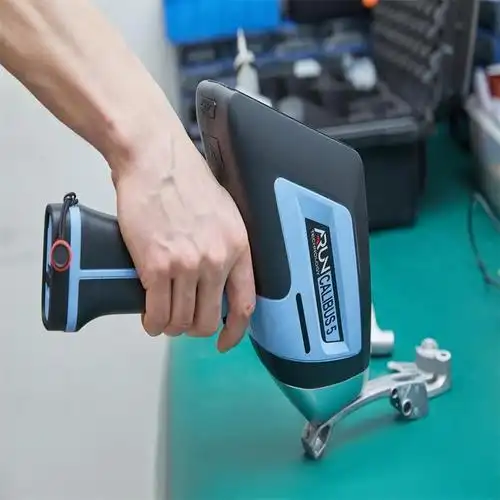Flexible Custom CNC Milling Services
Equipped with advanced 3-axis and 5-axis CNC milling machines, we rapidly produce metal and plastic prototypes and parts. No matter the project size, we ensure consistent quality, tight tolerances, and fast turnaround time.
Get a quote instantly and order your custom CNC machined parts at the most competitive prices.
Innovative Companies We Support




CNC Milling for Every Stage

3-Axis CNC Milling
With 3-axis CNC milling, precision meets affordability. It’s your go-to for simple parts that still demand accuracy.

4-Axis CNC Milling
Compared to three-axis milling, four-axis milling not only significantly reduces the number of setups and fixtures but also the ideal solution for machining long parts with side-wall features.
Flexible CNC Milling Solutions
Our advanced online CNC machining services adapt seamlessly to your design requirements and development timelines. With fast quoting and remote ordering, you can easily kick-start projects from anywhere. We produce prototypes, test parts, and low-volume production efficiently, supporting a wide range of materials with up to ±0.01mm precision——meeting the hight-speed and accuracy demands of modern product development.
Rapid Prototyping CNC Milling
With our custom milling services, Horizon delivers high-precision CNC prototypes, functional parts, and intricate machined components quickly—supporting a wide range of applications and providing a reliable foundation for full-scale production.
Low Volume CNC Milling
Our low-volume milling services provide fast, cost-effective delivery of precision parts. With flexible production, rapid turnaround, and no tooling costs, we help you validate designs, transition smoothly to full-scale production, or fulfill small-batch orders with consistent, high-quality results.
Why Choose Horizon?
With a network of over 50 trusted partners, we can seamlessly support everything from rapid prototyping and small-batch trials to full-scale mass production.
I
Fast Delivery
Whether it’s prototypes or large-scale orders, we deliver quickly without compromising quality keeping your projects on schedule.
II
Advanced Equipment
With state-of-the-art 5-axis CNC machines and strict inspection systems, we guarantee precision in every part.
III
A Team That Understands You
We don’t just machine parts-we help optimize your design, saving you time and cost while improving performance.
IV
Trusted By Many Industries
From aerospace to medical, automotive to electronics, clients across industries rely on us for long-term partnerships.
We offer comprehensive custom machining services, ranging from prototypes delivered in as fast as one day to high-volume production of complex parts, all executed efficiently. With our strong machining capabilities and extensive manufacturing network, we can accommodate larger sizes, higher complexity, and stricter tolerances, providing reliable solutions for our clients.
How to Work With Us
How to Work With Us
Our ordering process
3-axis machining Vs 5-axis Machining-Which Suits Your Project?
Choosing the right machining method is not only the key to achieving efficient and precise production, but also a way to reduce costs. Both 3-axis and 5-axis machining have their own advantages, capable of handling everything from complex curved surfaces to rotationally symmetric parts. Understanding their characteristics will help you make the best choice for each project.

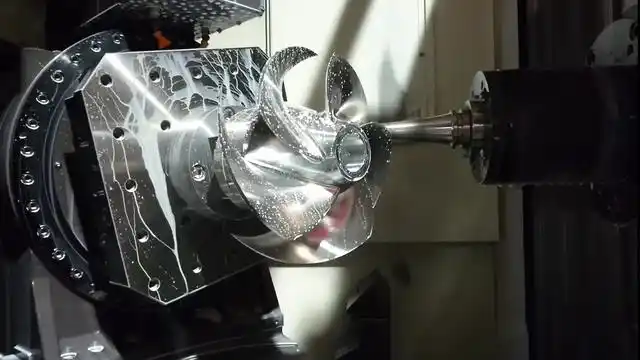
Feature
3-Axis Machining
5-Axis Machining
Movement
3-axis machining is a precise and versatile method for producing flat surfaces, slots, holes, and simple 3D parts. It offers high accuracy, repeatability, and efficiency, making it ideal for small-batch or straightforward part production. Advanced tooling ensures excellent surface finish and dimensional precision.
Simultaneous, or continuous, 5-axis machining allows all five axes to move at the same time, enabling the machine to adjust its position continuously without stopping. This approach can significantly increase machining speed and efficiency, as there are no interruptions between cutting passes, while also improving surface finish on complex parts.
Complexity
Suitable for flat surfaces, slots, and simple 3D parts; simple in structure.
Surface Quality
Provides smoother surfaces withfewer tool marks, though the surfacequality on complex curves is stillinferior to 5-axis machining.
When machining complex surfaces or intricate structures, it achieves smoother finishes with fewer tool marks.
Efficiency
High production efficiency, but complex parts require multiple setups.
Faster production with fewer setups.
Best For
Flat surfaces, slots, and simple 3D parts.
Components with complex structures and high precision requirements.
Cost & Investment
Both part and equipment costs are lower than those of 5-axis machining.
Higher machine and programming costs.
Our CNC milling capabilities
Maximum Part Size
Minimum Part Size
General Tolerances
Lead Time
3-Axis
1000 x 500 x 500 mm
5 x 5 x 5 mm
±0.1 mm
Simple products can be completed in as little as 1 day.
4-Axis
1000 x 500 x 500 mm
5 x 5 x 5 mm
±0.1 mm
Most projects take 5 days from material procurement to production completion.
5-Axis
2500*1600*500
5 x 5 x 5 mm
±0.05 mm
Most projects take 5 days from material procurement to completion of production.
Tolerances without individual tolerance indications according to ISO 2768-1:1989. Values in millimeters.
| Basic size range | f (fine) | m (medium) | c (coarse) | v (very coarse) |
|---|---|---|---|---|
| 0.5 up to 3 | ±0.05 | ±0.1 | ±0.2 | — |
| over 3 up to 6 | ±0.05 | ±0.1 | ±0.3 | ±0.5 |
| over 6 up to 30 | ±0.1 | ±0.2 | ±0.5 | ±1.0 |
| over 30 up to 120 | ±0.15 | ±0.3 | ±0.8 | ±1.5 |
| over 120 up to 400 | ±0.2 | ±0.5 | ±1.2 | ±2.5 |
| over 400 up to 1000 | ±0.3 | ±0.8 | ±2.0 | ±4.0 |
| over 1000 up to 2000 | ±0.5 | ±1.2 | ±3.0 | ±6.0 |
| over 2000 up to 4000 | – | ±2.0 | ±4.0 | ±8.0 |
Tolerances for CNC Machining
Horizon applies the ISO 2768-m (medium) standard for machined plastics and the ISO 2768-f (fine) standard for machined metals. Under normal circumstances, CNC machining tolerances can be controlled within the range of ±0.125 mm (±0.005″) to ±0.05 mm (±0.002″). For tighter tolerances, please provide fully detailed 2D drawings. Our engineering team will confirm the critical dimensional requirements with you and strive to achieve the highest precision possible. If 2D drawings are not available, we will apply the ISO 2768-m (medium) standard for machined parts.
Quality Assurance
| Driven by excellence, we embed quality into every detail—from advanced tools to rigorous standards. We ensure consistent, outstanding quality. | |||||
|---|---|---|---|---|---|
| 1 | Advanced Inspection Equipment | ||||
| We employ professional inspection equipment for precise measurement and validation. A spectrometer analyzes metal composition, a 2.5D measuring instrument verifies detailed features, a coordinate measuring machine (CMM) inspects complex three-dimensional structures, and height gauges ensure the accuracy of fundamental dimensions. | |||||
| 2 | Strict quality management system | ||||
| From first article inspection to in-process checks and final pre-shipment testing, every stage is governed by a rigorous management system to ensure consistent quality. | |||||
| IQC(Incoming Quality Control) | FAI (First Article Inspection) | ||||
| IPQC(In-Process Quality Control) | CMM inspection report | ||||
| FQC(Final Quality Control) | DIR(Dimensional Inspection Report ) | ||||
| OQC(Outgoing Quality Control) | CAR(Corrective and Preventive Action Report) | ||||
| Material Certificates | ISO 9001 | ||||
CNC Milling Materials
We offer a wide range of CNC machining materials, including metal alloys, plastics, and composites. All materials are carefully selected for high strength, excellent durability, and cost efficiency. Our engineering team provides professional DFM (Design for Manufacturability) guidance to help optimize your plastic and metal part designs for efficient production. Contact us or upload your CAD file to explore material options, receive instant quotes, and access customized manufacturing solutions.
Metal
Magnesium
Magnesium & Magnesium Alloy Materials Magnesium (Mg) and its alloys are among the lightest structural metals available, offering exceptional strength-to-weight ratio, good thermal conductivity, and beneficial vibration-damping properties. These materials are increasingly attractive for advanced engineering uses such as aerospace, automotive, and electronics applications where weight reduction is critical.
Titanium
Titanium Titanium is a lightweight yet high-strength metal known for its exceptional strength-to-weight ratio, excellent corrosion resistance, and outstanding biocompatibility. It maintains stable mechanical properties across high and low temperatures and features a low thermal expansion coefficient, making it ideal for demanding applications. Thanks to these superior properties, titanium and titanium alloys are widely used
Steel Mild Low Carbon
Low-Carbon (Mild) Steel Material Low-carbon steel is a type of carbon steel with low carbon content, typically referring to steel materials with a carbon content ranging from 0.02% to 0.30%. Due to its low carbon content, it is also known as “mild steel.” Its performance characteristics are particularly notable: compared to medium-carbon steel and high-carbon
Stainless Steel
Stainless Steel Material & Alloys Stainless steel is a family of corrosion-resistant iron alloys developed to withstand oxidation, corrosion, and wear. Thanks to its excellent durability, mechanical strength, and versatile formability, stainless steel is widely used across industries requiring long-term performance—even in harsh or aggressive environments. Its favorable operational and welding properties can fully meet
Copper
Copper Material & Copper Alloys Copper is a metal that is corrosion-resistant, extremely electrically conductive, and highly ductile. Its glossy orange-red appearance is instantly recognizable, and the metal remains aesthetically appealing even during its natural oxidation process—where environmental reactions form a bluish-green coating known as patina. However, it should be noted that copper’s weldability is
Brass
Brass Material & Brass Alloys Explore HorizonRP’s brass materials—offering excellent machinability, corrosion resistance, and attractive appearance. Ideal for hardware, plumbing, decorative, electrical, and industrial applications. Brass is an alloy composed of copper and zinc, with a golden color and excellent weather and corrosion resistance. Its tensile strength is comparable to that of mild steel. In
Aluminum
Aluminum Material & Aluminum Alloys Aluminum is highly favored in CNC machining due to its low density, excellent mechanical properties, superior thermal and electrical conductivity, and outstanding corrosion resistance. Among aluminum alloys, 6061-T651, 7075-T651, and 2024-T351 are widely used for their ideal balance of strength, machinability, and cost.
Plastics
PVC
PVC (Polyvinyl Chloride) Plastic Material Polyvinyl chloride (PVC) is a widely used thermoplastic polymer material characterized by excellent mechanical properties, outstanding corrosion resistance, and superior electrical insulation performance. By incorporating various additives, it can be tailored to meet customized requirements. Owing to its unique combination of properties, PVC finds extensive applications in fields such as
PMMA (Acrylic)
PMMA (Acrylic) Engineering Material Acrylic (also known as polymethyl methacrylate, PMMA) boasts not only excellent optical performance but also outstanding UV resistance. With a light transmittance of up to 92%—comparable to glass—it has become a popular material in scenarios ranging from neon signs in shopping malls and display case panels in museums to precision optical
PEEK
PEEK (Polyetheretherketone) Engineering Material PEEK (polyetheretherketone) is a premium thermoplastic widely recognized for its exceptional thermal stability, mechanical strength, chemical resistance, dimensional stability, and in many cases biocompatibility and electrical insulation. It is used in extreme environments like aerospace, medical implants, electronics, and semiconductor industries.
Nylon
Nylon (Polyamide) Engineering Material Nylon (polyamide) is a versatile engineering thermoplastic known for its high strength, excellent wear resistance, good chemical stability, and toughness. It is widely used across industries for gears, bearings, bushings, automotive components, industrial parts, and more. Its ease of machining, coupled with its chemical resistance, also makes it suitable for applications
POM
POM (Polyoxymethylene / Acetal) Engineering Material POM (polyoxymethylene), also known as acetal, is a high‑performance engineering thermoplastic valued for its rigidity, low friction, excellent wear resistance, and good dimensional stability. It is often used in precision mechanical parts that require durable, low‑maintenance performance.
ABS
ABS (Acrylonitrile Butadiene Styrene) Material ABS (Acrylonitrile Butadiene Styrene) is a widely used engineering thermoplastic known for its excellent balance of strength, toughness, and processability. Because it combines rigidity from acrylonitrile and styrene with impact resistance from butadiene, ABS is commonly used in consumer products, enclosures, housings, and structural components.
CNC milling supports a wide range of additional metals, plastics, and composites. Visit our materials page for a full list.
Surface Finish and Post-Processing Options
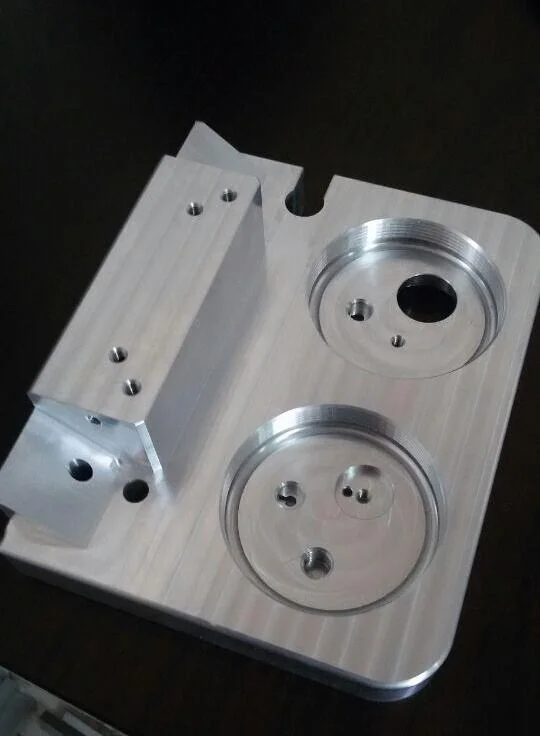
As machined
The machined or deburring finish is the standard finish where unwanted attach chips are removed with deburring tools, and sharp edges are chamfered to smooth the surface (3.2 μm).

Bead Blasted
Bead blasting produces a matte texture, removing all the marks of machining tools. It applies to ABS, Aluminum, Brass, Stainless Steel, and Steel parts.
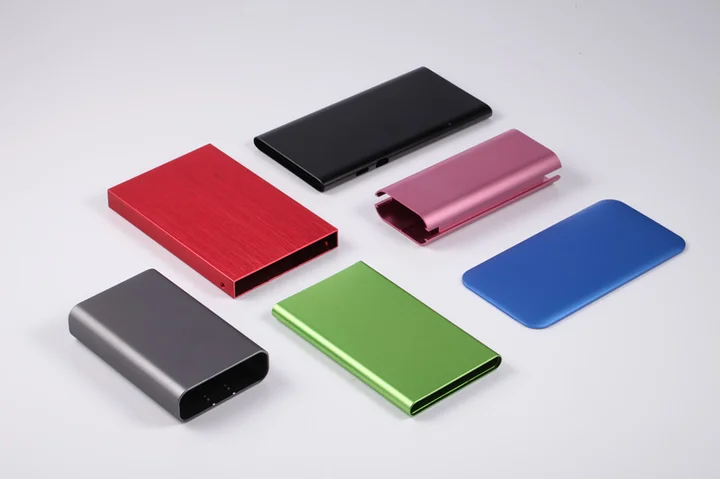
Anodizing
Anodizing involves adding an aluminum oxide coating to aluminum and its alloys. The layers, which come in various colors, increase strength and shield the surface from corrosion.

Alodine
Provides excellent corrosion resistance property to the aluminum parts with greenish-gold color. It is the low-cost and quick surface finishing approach.
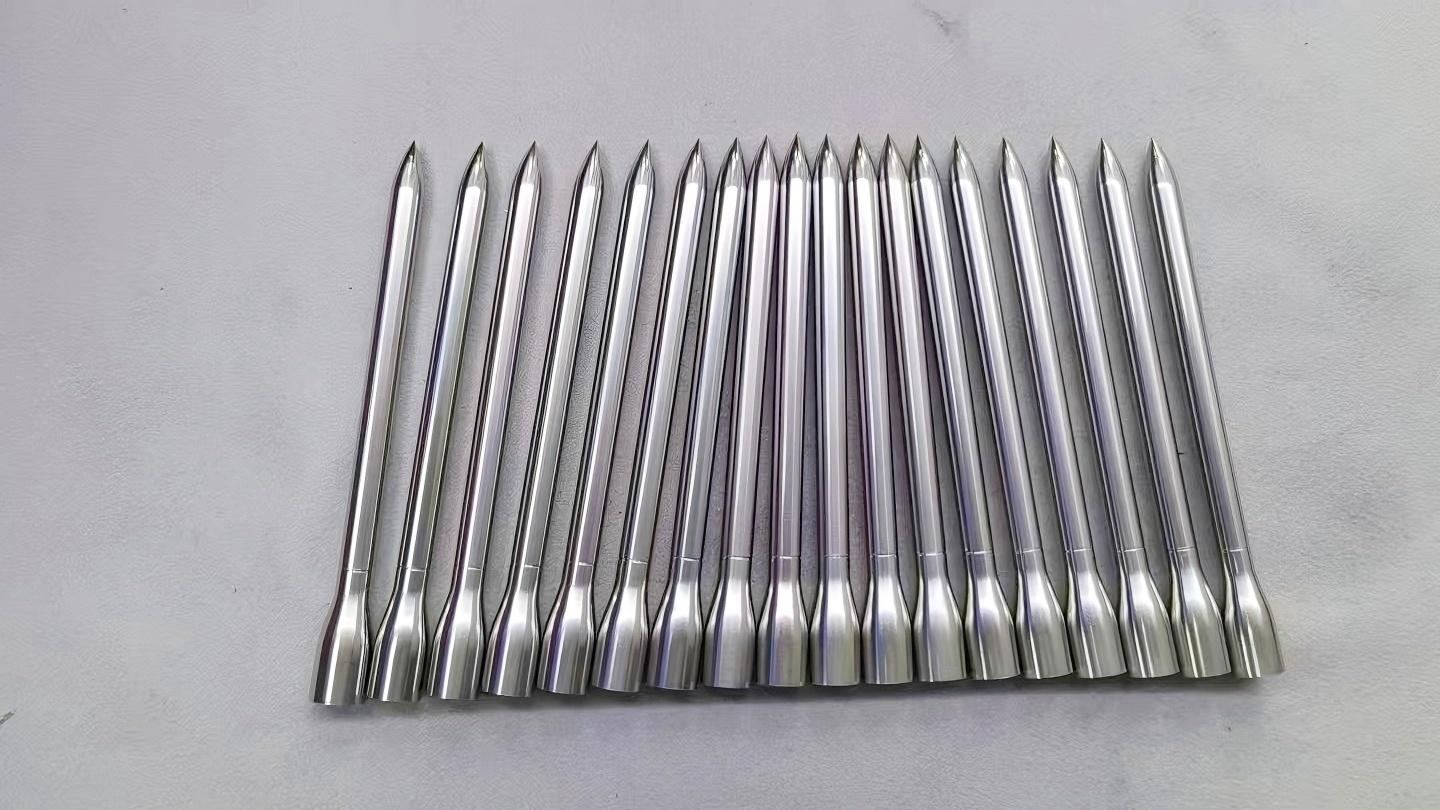
Polishing
Physical rubbing of a metal surface to create a shiny surface is called a polishing surface finish. It increases the reflectivity and does not affect the dimensional stability of parts.
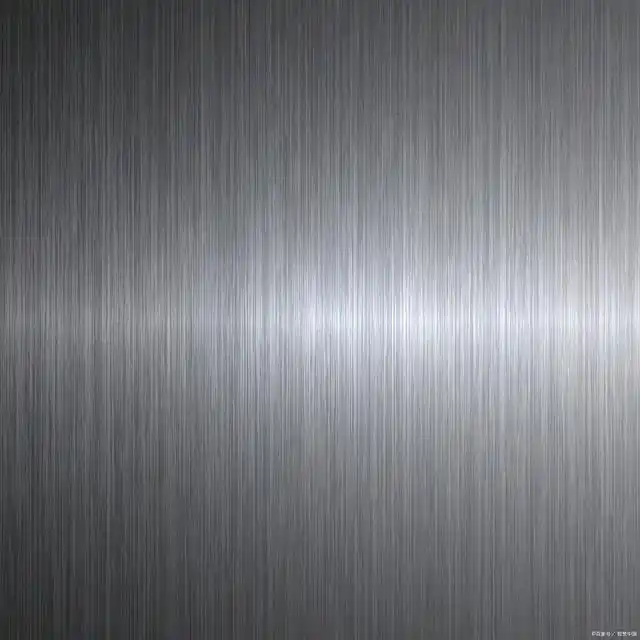
Brushing
Brushing is achieved by applying an abrasive brush to the metal surface, which produces a unidirectional satin finish. And it is not recommended for highly corrosive materials.

Sanding
Provides a random, non-linear texture with a shiny, high gloss finish. However, it might be unable to create sharp corners and pockets

Black-Oxide
Black oxide finish reduces surface reflectivity and offers mild corrosion protection. It involves adding a thin layer of magnetite to the surface.

Electroplating
Electroplating increases the hardness of the steel &aluminum parts. It offers excellent corrosion, wears, and abrasion resistance.

Electroless Nickel Plating
A thin layer of Nickel is created on the surface from a nickel-containing solution without electrolysis. Electro-less nickel plating provides a shiny appearance, excellent hardness, abrasive, wear, and corrosion-resistance to the substrate material.
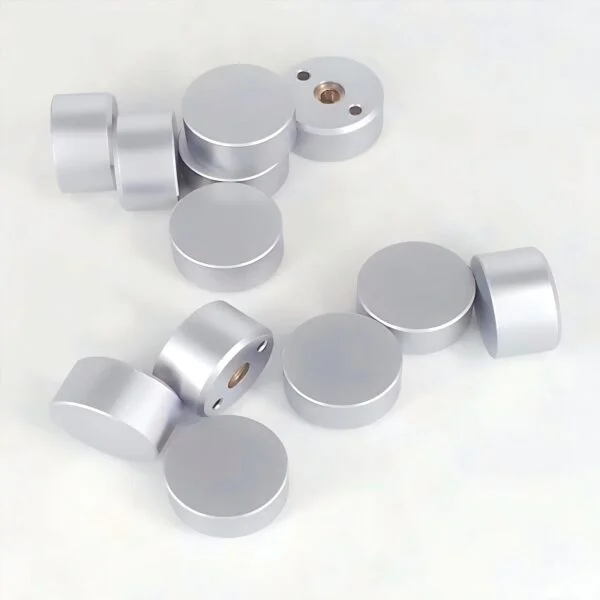
Chrome Plating
Chrome plating is widely used in various industries, which not only enhances the beautiful appearance of the product, but also improves the performance of the product, such as corrosion resistance, oxidation resistance, abrasion resistance, hardness, etc.
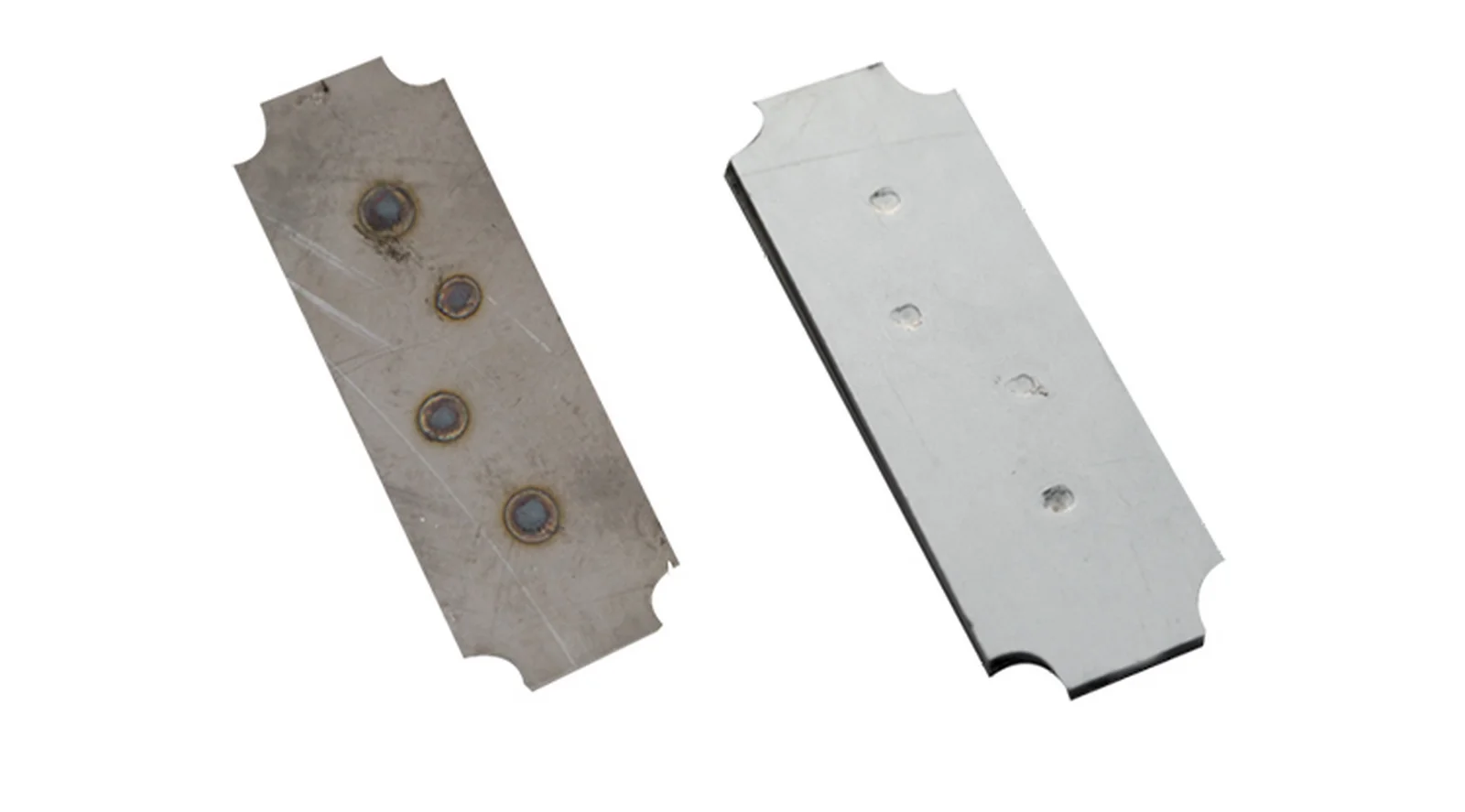
Passivation
Enhance the appearance and functionality of the parts. After Passivation, parts of Steel and its alloys become super resistive from corrosion.
What is CNC Milling and How Does it Work?
CNC milling is a subtractive manufacturing process. It starts by fixturing a block of metal or plastic material inside the CNC mill. Using G-code, the CNC machine is programmed to rapidly mill out parts from the block of raw material. Our 3- and 5-axis CNC machines are equipped with various toolsets to maximize efficiency and production speed. Machined plastic parts are left as-milled, which typically means they show visible tool marks. Some metal parts allow more finishing choices like anodizing and chromate plating. When the run is complete and your required surface finish is applied, parts are boxed and shipped shortly thereafter.




